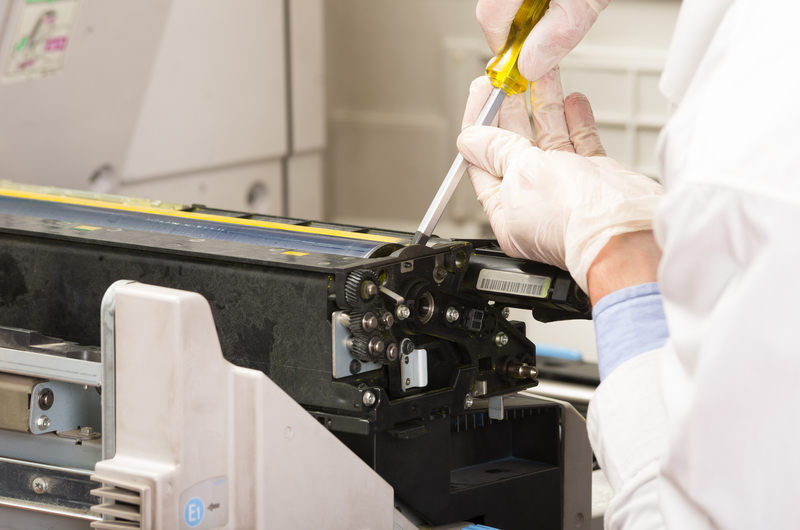Cut Down on Household Waste in Creative Ways
As climate concerns steadily grow, the push towards minimizing waste in our homes has never been more urgent. Reducing household waste not only benefits the environment but also saves you money and simplifies your lifestyle. This comprehensive article explores creative, practical techniques you can adopt to cut down on waste and transform your home into a model of sustainability.
Why Reducing Household Waste Matters
Before diving into innovative methods, let's first understand why it's so important to reduce household waste:
- Environmental Impact: Landfills are rapidly filling up, leading to harmful emissions and pollution.
- Conservation of Resources: Cutting waste means less demand for raw materials and energy.
- Financial Benefits: Reducing waste often translates to spending less on unnecessary products and disposal fees.
- Positive Community Influence: Creative waste reduction inspires others to adopt eco-friendly habits.

Creative Ways to Reduce Household Waste
There are endless innovative ways to cut down on household waste. Below, we highlight several creative, actionable strategies for every aspect of your home life.
1. Get Creative with Food Waste
- Plan Smartly: Meal planning minimizes food waste by ensuring you buy only what you need.
- Clever Leftovers: Reinvent leftovers by making new dishes, such as soup from vegetable scraps or sandwiches from last night's roast.
- Composting: Set up a small compost bin to turn peels, coffee grounds, and eggshells into fertile soil for your plants.
- Regrow Vegetables: Grow green onions, lettuce, and herbs from kitchen scraps on your windowsill.
2. Reimagine Packaging and Containers
- Switch to Reusables: Use cloth shopping bags, glass jars, and stainless steel containers instead of disposable versions.
- Upcycle Jars and Bottles: Empty glass jars can hold pantry staples, DIY cleaning products, or serve as drinking glasses.
- Repurpose Boxes: Cardboard boxes make great storage organizers, drawer dividers, or craft materials for kids.
- Buy in Bulk: Reduce packaging waste by purchasing food and household supplies from bulk bins and refill stations.
3. Rethink Disposable Items
- Ditch Paper Towels: Replace single-use paper towels with washable cloth rags or old t-shirts cut into cleaning cloths.
- Cloth Napkins: Pretty, sturdy, and zero waste, cloth napkins can be washed and reused for years.
- Rechargeable Batteries: These keep hundreds of batteries out of landfills and save you money over time.
- Beeswax Wraps: Use beeswax wraps instead of plastic wrap for storing food, covering bowls, and wrapping snacks.
4. Upgrade Your Recycling Game
- Know What to Recycle: Check your municipality's recycling rules--contamination can send whole batches to the landfill.
- Recycling Centers: Take hard-to-recycle items (like electronics, batteries, and styrofoam) to speciality recycling centers.
- Creative Crafting: Use cleaned recyclables for art projects or donate to local schools and maker spaces.
5. Embrace the Power of Repair and Reuse
- Fix, Don't Toss: Learn basic repair skills--sewing, patching, gluing--that extend the life of clothing and household items.
- Library of Things: Join or start a community tool library where you can borrow infrequently-used items instead of buying new ones.
- Upcycling Furniture: Transform old furniture with new paint, handles, or by turning it into something completely different!
6. Smart Shopping for Long-Lasting Goods
- Choose Quality: Invest in high-quality, durable products rather than cheap items that break quickly and add to waste.
- Minimalist Wardrobe: Adopt a capsule wardrobe to buy less, wear more, and create less textile waste.
- Buy Preloved: Thrift stores and online marketplaces are treasure troves for clothing, furniture, and electronics.
Innovative Household Waste Reduction Activities
Turn Waste into DIY Projects
- Garden Markers: Old spoons, sticks, or popsicle sticks can be painted and used to label your homegrown herbs.
- Bird Feeders: Transform empty milk cartons or plastic bottles into creative bird feeders for your yard.
- Homemade Cleaning Products: Use citrus peels, vinegar, and baking soda to create effective, zero-waste cleaners.
Host a Zero Waste Challenge
- Family Competition: See which member of your household can create the least trash in a week.
- Community Events: Organize neighborhood "waste audits" to raise awareness and inspire more creative waste reductions.
- Swap Meets: Host local swap parties for clothing, books, toys, and household items to encourage reuse in your community.
Creative Waste Reduction in Every Room
Kitchen
- Refillable Dispensers: Use refillable containers for cereal, pulses, and snacks to cut packaging waste.
- Preserve Food: Learn to pickle, ferment, or freeze excess produce before it spoils.
- DIY Broth: Collect veggie scraps in the freezer and boil them down to make homemade broth--then compost the remains!
Bathroom
- Bulk Toiletries: Purchase shampoo, conditioner, and soap in bulk, or try solid versions like shampoo bars and bar soaps.
- Refillable Razors: Swap disposable razors for metal safety razors with replaceable blades.
- Reusable Cotton Rounds: Make or buy washable cotton pads for makeup removal and cleansing.
Laundry Room
- Laundry Detergent Sheets: Try plastic-free laundry sheets or powder in recyclable packaging.
- Wool Dryer Balls: Replace disposable dryer sheets with reusable wool dryer balls to soften clothes naturally.
- Line Dry: Save energy and avoid microplastic pollution from dryers by air drying your laundry.
Home Office
- Go Digital: Minimize printing and opt for digital note-taking and document storage.
- Refillable Pens: Use pens with refillable cartridges instead of disposable ones.
- Scrap Paper: Cut used paper into notepads for reminders and shopping lists.
Outdoors & Garden
- Rainwater Collection: Repurpose large barrels to collect rainwater for gardening.
- Yard Composting: Turn leaf litter and grass clippings into rich compost instead of bagging and discarding them.
- Tool Maintenance: Regularly clean and oil gardening tools to extend their life and reduce replacements.
How to Get the Whole Family Involved
Making reducing waste at home a family effort ensures lasting results and more fun:
- Assign Roles: Make each family member responsible for a particular aspect of waste reduction--like recycling, composting, or shopping.
- Reward Progress: Celebrate milestones, such as a month of zero food waste, with a special meal or activity.
- Include Kids: Get children involved in creative upcycling crafts, gardening, or cooking to instill eco-friendly habits early on.
- Learn Together: Watch documentaries, read books, and follow sustainable living blogs to stay inspired.
The Positive Ripple Effects of Household Waste Reduction
- Personal Empowerment: Adopting a low-waste lifestyle provides a sense of accomplishment and purpose.
- Savings: Households often notice significant reductions in grocery bills and other expenses.
- Community Inspiration: Your enthusiasm motivates neighbors, friends, and family to join the movement.
- Environmental Stewardship: You'll help ensure a cleaner, healthier planet for future generations.

Frequently Asked Questions (FAQs) About Cutting Down Household Waste
What's the easiest first step for cutting household waste?
Start with food waste--plan meals, use leftovers, and start composting. These simple steps have an immediate impact and are easy to sustain.
How can I make reducing waste fun for kids?
Transform waste reduction into games and creative projects. Build crafts from recyclables, or set up a family waste-reduction challenge with small rewards.
Are there any apps to help track or reduce waste?
Absolutely! Apps like Too Good To Go (to rescue surplus food), iRecycle (for local recycling guides), and Olio (for sharing surplus food with neighbors) make it easier to stay on track.
What should I do with hazardous household waste?
Never dispose of hazardous items with your regular trash. Find your local hazardous waste facility for items like batteries, electronics, chemicals, and medicines.
Can reducing household waste really make a difference?
Yes! Millions of small changes add up. A single household can divert hundreds of pounds of waste from landfills each year with a few mindful habits.
Final Thoughts: Start Small, Think Big
There are so many creative and easy strategies to cut down on household waste. The key is to start small--pick one habit, stick with it, and gradually introduce more. Soon, you and your family will naturally create less waste, save money, and feel good about your positive impact on the planet.
- Explore new habits like composting, upcycling, and buying secondhand wherever possible.
- Share tips and tricks with friends and neighbors to build a zero-waste community.
- Celebrate successes--every bit less in your trash bin is a win for the earth!
Cutting down on household waste creatively is a journey, not a destination. Why not start today? Your home, your wallet, and the planet will all thank you!